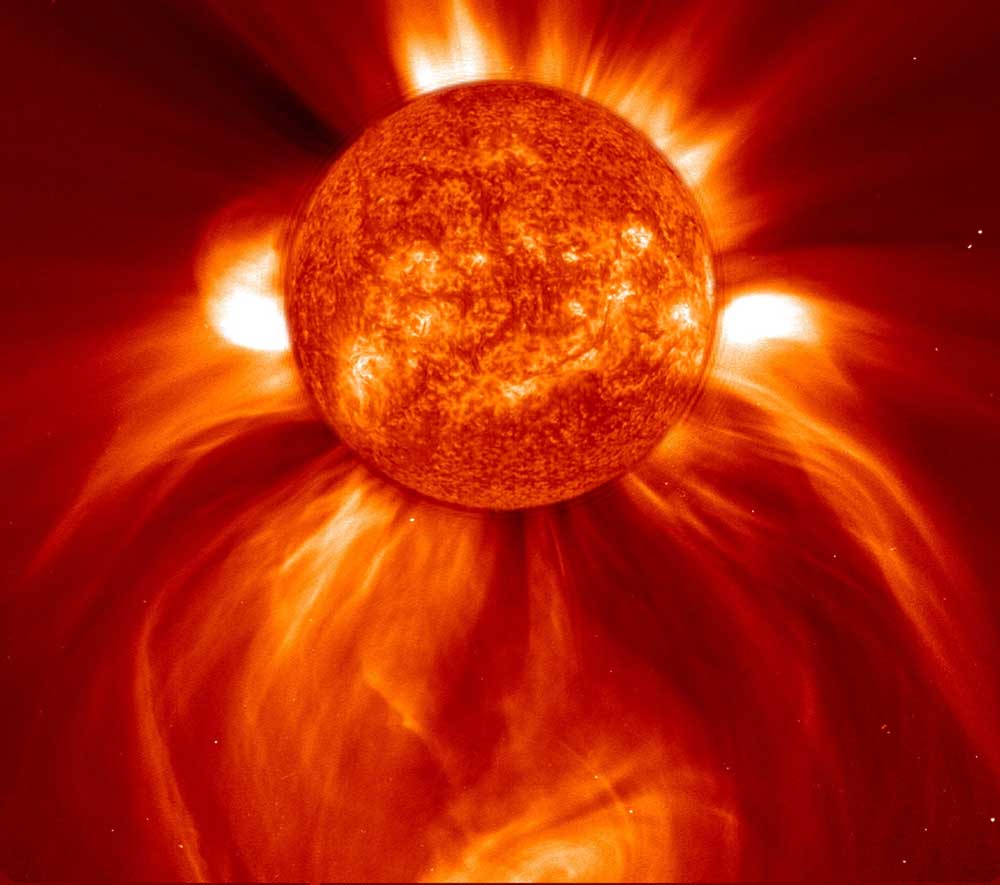CME Alerts Education Portal
What is a Coronal Mass Ejection (CME)?
 A Coronal Mass Ejection (CME) is a large-scale expulsion of plasma and magnetic field from the Sun’s corona, the outermost layer of the Sun’s atmosphere. CMEs are among the most powerful solar phenomena and can have far-reaching effects throughout the solar system.
A Coronal Mass Ejection (CME) is a large-scale expulsion of plasma and magnetic field from the Sun’s corona, the outermost layer of the Sun’s atmosphere. CMEs are among the most powerful solar phenomena and can have far-reaching effects throughout the solar system.
Formation and Characteristics
CMEs originate from the Sun’s corona, where the magnetic field is complex and dynamic. The Sun’s magnetic field lines can become twisted and tangled due to differential rotation (the Sun’s equator rotates faster than its poles) and other solar activities, such as the movement of large sunspots. When the stress on these magnetic field lines becomes too great, they can snap or reconfigure in a process known as magnetic reconnection. This reconnection releases a tremendous amount of energy, which propels solar plasma outwards, forming a CME.
Components of a CME
1. Plasma: A CME consists primarily of charged particles, including electrons, protons, and heavier ions like helium nuclei. This plasma is essentially a superheated, electrically charged gas.
2. Magnetic Field: The plasma within a CME is threaded by magnetic field lines. These magnetic fields are frozen into the plasma and carried along with it as it travels through space.
3. Shock Waves: A fast-moving CME can create shock waves in the solar wind, similar to the bow wave formed by a ship moving through water. These shock waves can accelerate particles to near-light speeds, contributing to space weather phenomena like solar energetic particle (SEP) events.
Interaction with Earth
When a CME is directed toward Earth, it can have significant effects on our planet:
1. Geomagnetic Storms: If the magnetic field carried by the CME is oriented opposite to Earth’s magnetic field (southward), it can connect with Earth’s magnetosphere, transferring energy into it and causing geomagnetic storms. These storms can disrupt the functioning of satellites, communications systems, and power grids. The most powerful storms can induce currents in long electrical lines, leading to transformer damage and blackouts.
2. Auroras: CMEs can cause spectacular auroral displays, known as the Northern and Southern Lights. These occur when charged particles from the CME collide with atoms in Earth’s atmosphere, exciting them and causing them to emit light.
3. Radiation Hazards: High-energy particles accelerated by CMEs pose a radiation hazard to astronauts in space and can also affect passengers and crew on high-altitude flights near the poles. Spacecraft and satellites can be damaged by these particles, leading to operational failures.
CMEs and Space Weather
CMEs are a critical component of space weather, which refers to the environmental conditions in space as influenced by the Sun. Space weather forecasting aims to predict CMEs and their potential impact on Earth. Advanced space-based observatories, such as the Solar and Heliospheric Observatory (SOHO) and the Solar Dynamics Observatory (SDO), monitor the Sun in real-time to detect CMEs.
CMEs can vary widely in size, speed, and impact. Some CMEs are relatively small and slow, while others are massive and can travel at speeds exceeding 3,000 kilometers per second (about 1.86 million miles per hour). The time it takes for a CME to reach Earth can range from one to several days, depending on its speed.
Historical Examples
One of the most famous CMEs is the Carrington Event of 1859, the largest geomagnetic storm on record. It caused widespread disruptions to telegraph systems and produced auroras visible as far south as the Caribbean. If a similar event were to occur today, it could cause catastrophic damage to modern technology.
In 2012, a massive CME narrowly missed Earth. Had it struck, it could have caused severe disruptions to power grids and communication networks worldwide.
Conclusion
A Coronal Mass Ejection is a powerful solar event with the potential to cause significant space weather effects on Earth. Understanding and monitoring CMEs are essential for protecting our technological infrastructure and preparing for potential disruptions caused by these solar phenomena.
Andrew Bucchin
Founder
CME Alerts

